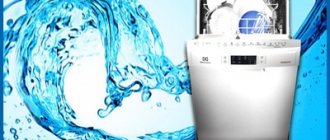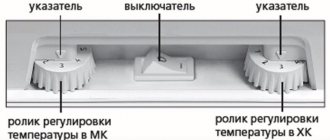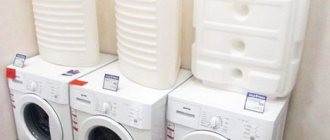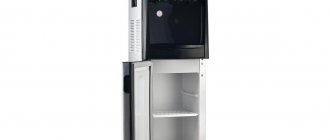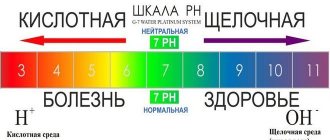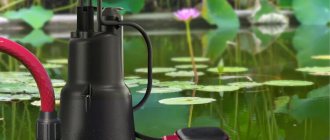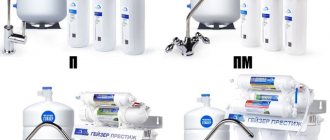Aquarium thermostats
These are devices with a built-in thermostat. You set the required water temperature, and the device heats it up to the required numbers. After this, it automatically turns off, turning on after the medium begins to cool.
There are 2 types of such water heating devices.
- Mechanical.
- Electronic.
Important! Mechanical devices are less accurate (the error is from 1 to 2 degrees), but have a lower cost. Electronic devices are much more accurate, but their cost is much higher.
Most devices come without a built-in thermometer. The device maintains the optimal temperature, but does not display its value. Therefore, you need to purchase a special thermometer for water along with the thermostat.
When choosing an aquarium water heater, you need to pay attention to the following characteristics:
- Correct selection of power.
- The presence of thermoregulation.
Important! It is believed that a 10 W device is enough to heat 4.5 liters of water. For an artificial reservoir of larger volume, it is better to buy not one powerful device, but several low-power ones: this way it is easier to heat the water to optimal levels.
Advantages
Modern models of water heating devices have the following advantages:
- Reliability.
- Possibility of placement under water.
- Safety.
Important! During prolonged use, the device may produce errors, so it must be checked periodically using a regular thermometer.
Now about which water heater for an aquarium is better. If you are using shallow soil, it is advisable to use a thermal cable heater. In this case, you not only maintain the necessary environmental characteristics, but also create better conditions for aquatic plants. In addition, heated water freely rises to the surface without stagnating in the ground.
Thermostat in an aquarium heater
If you buy an aquarium heater without a thermostat, then be prepared to constantly monitor the water temperature in the aquarium so that if the water overheats, your fish does not turn into fish soup. You will not be able to control the water temperature at night, otherwise you will have to forget about sleep.
In practice, I haven’t seen heaters without a thermostat on sale for a long time. The thermostat operates fully automatically. The required water temperature is set on the relay of such a heater, and the heater independently turns on or off if necessary to heat the water. The accuracy of such heaters is usually 0.5 degrees Celsius.
How to properly install a heater in an aquarium?
Depending on the installation method, there are 2 types of aquarium water heaters:
- Non-submersible. These models go down to a certain point. The upper part of the device is above the surface.
Important! The disadvantage of non-submersible devices is their short service life.
- Submersible. Such devices have a longer service life because they are completely submerged in water.
How to properly install a heater in an aquarium?
- The device cannot be installed close to the surface, since during evaporation its upper part may be exposed to air, which leads to failure of the heater.
- Do not install the tube at the bottom of the aquarium. The minimum distance from the bottom is 20 mm.
- The tube is installed near the oxygen filter. Air emissions contribute to uniform heating of the water mass throughout the aquarium.
- After the device is installed, you cannot immediately connect it to the network. Keep the time for about half an hour. In this case, the temperature of the heater and the medium will be equal.
Important! If you do not wait this time, the glass may crack. If you want to clean the aquarium, the device must be turned off.
How to choose an aquarium heater
The larger the volume of the aquarium, the more powerful the heater should be.
How to choose a heater for an aquarium? One of the main parameters of the equipment under consideration is power.
The device is selected depending on the volume of the artificial reservoir: if the vessel is small, then you will need a heater for a small aquarium of low power, for a large volume - a more powerful device of the appropriate size.
To make the right choice, manufacturers must indicate on the packaging the characteristics of the device, which can be used to understand how many watts are needed to warm up the reservoir and which device is most suitable in a particular case.
The following must be taken into account: if you install a too powerful heater in the aquarium, it will not provide optimal temperature conditions, since the water will heat up quickly and the device will constantly turn off.
To protect yourself and your inhabitants from electric shock, the aquarium heater must be equipped with a special grille, which plays the role of protecting the fish from burns. When choosing the power of the heater, one should proceed from the following considerations: the water temperature should be at a constant level, regardless of external conditions.
If the volume of the reservoir is large, it is recommended to install not one water heater for the aquarium, but two, but of lower power. In this way, it will be possible to achieve uniform heating of the liquid.
Regardless of what equipment is used, a separate thermometer is installed in the artificial reservoir, which will be used to control the temperature.
It is worth adding that as the device is used, plaque, algae, and food residues appear on it. This means that the device requires periodic cleaning, but complete disassembly should be avoided. How to properly clean a heater? For these purposes, it is enough to wipe the outside surface with a damp sponge and rinse in clean water.
It is better to immediately choose good quality water heaters, taking into account the volume of the aquarium and the necessary conditions for underwater inhabitants, since their normal maintenance and development depend on the correct choice.
Types of water heaters
Some novice aquarists believe that a water heater is not the most important thing. But they are very wrong. Many fish in their natural environment live in tropical and warm rivers.
This suggests that the natural water temperature for them is 26-27°C. If in the summer the fish somehow survive the lack of additional heating, then in the winter this could be a disaster for them.
Although summer is not yet an indicator, since the water temperature changes day and night and not every fish will survive these changes (even 2-4 degrees). Also, water can be affected by leaving a window open for a long time or suddenly turning off the heating in the apartment.
Think carefully before deciding not to purchase a heater, because you need to be 100% sure that the water is as warm as the fish need it. By the way, modern heaters have temperature sensors that control that the water does not overheat.
Water heaters come in different types. We will tell you about each of them below. You will choose the one that suits you best.
Submersible
How immersion heaters are used is already clear from their name. Such a water heater is lowered into the water to a certain mark on it. It looks like a cone or an oblong cylinder, inside of which there is a heating element. Its body must be heat-resistant and strong.
This device is made of different materials, it can be glass, plastic, titanium.
Flow-through
Such heaters are installed outside the tank, cutting into the filter hose. This ensures uniform heating of water. This device has a plastic body.
Its external placement, in addition, makes it possible to save on free space inside an artificial reservoir. True, it is recommended to use it in large aquariums, since there are no such water heaters with a power of less than 200 W.
Such heaters are installed under the ground, allowing the entire tank to be heated evenly. They also have a good effect on plant development.
This heater does not take up much space and is not visible under a layer of soil. True, if you want to remove it, you will have to disrupt the entire atmosphere of the artificial reservoir.
Cable heaters are more common in terrarium farming, but are also used for home aquariums.
Heating mats
These rectangular mats are placed under the bottom of the tank, through which the heat spreads evenly throughout the aquarium. It is believed that such heaters also have a beneficial effect on plants.
Naturally, you won’t be able to remove this water heater without lifting the glass house itself. But it will serve you much longer than other similar devices.
Which aquarium heater is best?
There are several manufacturers that offer similar devices that have earned respect among people. Many people are interested in which is the best heater to buy for an aquarium, but it is difficult to single out just one manufacturer, since it all depends on the requirements set by the buyer. It is worth noting that many aquarium manufacturers simultaneously produce additional equipment, including heaters. In this case, it is better to choose all of the same brand.
Aquarium heater "Juwel"
Under this name you can purchase several devices of different capacities, so you can choose the option for your volume. Water heaters in the Juwel aquarium have the following characteristics:
- The device has a built-in thermostat. In order to start using it, you just need to set the required temperature on the top of the heater and the value will be maintained in the specified range. The device will turn off when the required temperature is reached and turn on when the water cools down.
- The aquarium heater has a standard mount suitable for all types of containers. If the device was purchased for aquariums, then it can be installed inside the housing of a built-in internal biological filter.
Aquarium heater "Tetra"
Among the equipment of this company, one can highlight the “TETRATEC HT 25W” device, which has a special temperature controller from 19 to 31°C.
- Given the presence of a waterproof case and cover, the heater can be safely completely immersed in water.
- The presented Tetra aquarium heater can be used for aquariums with a volume of 10-25 liters.
- The device has a control light indicator. It is easy to install as it has a long cable.
- The TETRATEC HT 25W aquarium heater distributes heat evenly because it has a double ceramic heating element.
- There are two suction cups for attaching to glass.
"Aquael" heater for aquarium
Several devices are produced under this brand, and among them we can highlight the “Aquael Easyheater 50w”, which has no analogues on the market.
- The compact device is easily mounted on glass, and it can work not only in a vertical, but also in a horizontal position.
- The water heater in the aquarium does not burn the body of fish and other marine inhabitants. Its temperature range is large - 18-36°C.
- The device has a built-in overheating system and is easy to maintain and install.
With your own hands
When deciding to make a water heater for an aquarium with your own hands, you need to take into account the risk of electric shock during its operation. Although many are able to make safe aquarium heaters.
For production you will need:
- resistance resistors;
- a piece of tube with thick walls;
- dry filler;
- durable thermostat.
Manufacturing scheme:
- The number of identical resistors to generate suitable power is calculated.
- The size of the glass tube is determined (depending on the number of resistors). You should leave approximately 15 cm of free space in the tube.
- Dry filler is selected. Cleaned and calcined sand is suitable.
- The bottom of the tube is coated with sealant (for insulation), and then closed with a rubber stopper.
- A power wire connected to the thermostat is soldered to the upper and lower resistors.
- The heater is placed vertically inside so that the top of the tube does not show out of the water. The device must be secured to the walls of the vessel using suction cups.
You can also make a water heater yourself, following our step-by-step instructions. But remember to be extremely careful, because you risk getting an electric shock!
To create the device you will need resistors, a piece of glass tube with thick walls, dry filler, and a remote thermostat.
Difference between water temperatures in the aquarium and in the room (°C)
- Calculate the current by dividing the power by the applied voltage. This way you will understand the resistance value of the heater. Select the required number of identical resistors (their total power and resistance indicators must correspond to the calculated values).
- Determine the length and diameter of the glass tube based on the size and number of resistances. Please note that resistors soldered in series must be placed in a tube with a free space of 15 cm.
- You can use purified and calcined sand as a filler.
- Close the bottom hole of the tube with a rubber stopper placed on the aquarium sealant.
- Solder the ends of the network cable to the upper and lower resistors. Place all this in a tube and cover it with sand (it should be at the bottom of the tube, covering the top resistor).
- Seal the top of the tube with aquarium sealant. Connect the power cable to a thermostat with a remote temperature sensor, which is lowered into the tank.
And you already know how to attach the device. We talked about this a little earlier.
When setting up a home aquarium, you will need many components. After all, in order for the inhabitants of an artificial reservoir to feel good and comfortable, everything needs to be done wisely. One desirable tank component is a water heater.
In this article we will talk about why it is needed, find out what these heaters are, and figure out how to use such a device.
In addition, a bonus for you will be detailed instructions on how to make a heater with your own hands, while saving money and learning something new.
Do-it-yourself thermostat for an aquarium
You don't have to spend money on a DIY aquarium heater. To make a thermostat you will need:
- glass flask 20 cm high and 20 mm in diameter;
- two charcoal sticks;
- two rubber stoppers for hermetically sealing the flask;
- insulated electrical cable up to 2 meters long;
- electric plug.
When making a heater for an aquarium, follow the exact sequence of actions:
- We screw the electrical wire to the plug.
- We attach carbon sticks to the free end of the wire; to avoid oxidation, the joints should be treated with resin.
- We make two holes in each plug: one for sticks, the second for a gas outlet.
- We install charcoal sticks into the plugs, lowering them as deep as possible.
- We make a saline solution from 1 tsp. salt and a glass of water.
- Pour the saline solution into the flask so that the charcoal sticks are immersed in it.
- We tightly close the flask with a stopper and immerse it in the tank; there should be no fish at the time of immersion. Lower the heating device so that it is completely under water. You cannot hide the device in sand or other soil; it is recommended to attach it to the walls of the tank. The device is placed vertically.
- We turn on the water heater for the aquarium and leave it for 24 hours.
- After a day, you need to check the water temperature in the aquarium. If the power is insufficient, add more salt to the solution. Leave the device for another day.
When the required temperature is reached, you can release all the inhabitants into the aquarium. When making a homemade device, exercise extreme caution, as working with electrical appliances is life-threatening.
Aquatic creatures will be much more comfortable if they have a temperature regulator. Without a water heater, the water in the aquarium will change, becoming warmer and colder. Changes in temperature are affected by light sources, room temperature, seasonality, and sunlight. Beginning aquarists should buy an aquarium water heater with a thermostat. The water heater will automatically determine the temperature of the water in the aquarium and change the parameters if necessary. You won't have to constantly monitor the temperature, and the fish will feel comfortable.
Aquarium heater with thermostat
If the aquarium contains tropical fish, the water temperature should be an order of magnitude higher than the air temperature in the room. To maintain uniform water temperature during the day and night, aquarium heaters with a special thermostat are installed. The latter is equipped with a sensor. It heats the water to the set temperature, after which it turns off the heating element. When the water temperature begins to drop, the thermostat turns the device back on.
The thermostat allows you to maintain a certain microclimate, and aquarists do not have to worry that their pets will die due to hypothermia or overheating of the water.
There are two types of thermostats:
- Mechanical. It has a relatively low cost. Displays temperature readings with an accuracy of plus or minus 2 degrees.
- Electronic. An order of magnitude more expensive than a mechanical one. Shows the water temperature in the aquarium with high accuracy.
Thermostats are also divided into:
- Built-in. Together with the heating element they are located in a sealed housing, which is installed directly into the aquatic environment.
- Remote. Installed outside the aquarium. They are connected using a wire to a temperature sensor located in the aquarium.
How to reheat?
There are several methods that allow you to quickly warm up the aquarium water environment without harm to the living organisms that live in it. If one is inexperienced, it is recommended to follow the instructions exactly.
Heater
Until recently, people used conventional heaters, which had many negative aspects, including overheating the water.
Nowadays, specialized thermostats have been developed that are used only for aquariums. Choose a heater with 2 thermostats, high power. It will last a long time and will not break.
To increase the temperature, just follow these steps:
- preliminary installation of the heater inside the aquarium using Velcro or a special bracket;
- turning on the heater in the power supply;
- adjusting the temperature at which the water should be heated.
10-15 minutes after turning on the device, the water temperature reaches the optimal level set on the sensor.
Adding boiled water
You can heat the water in the aquarium with hot boiled water. It should be remembered that there should not be too much of it, otherwise the buffer composition will change , which will negatively affect some species of fish.
Be sure to mix hot boiled water with tap water. This will help optimize its microelement composition, additionally performing the heating function.
Follow the following heating steps:
- boil water in a kettle;
- prepare a bottle into which hot and tap water are added in a ratio of 2:1;
- add hot water little by little, checking the temperature with a thermometer, do this gradually, degree by degree.
When the temperature becomes optimal, the procedure is completed. It can be used periodically with strong cooling.
Hot water bottle
If you use the bottle method, you can not dilute hot boiled water with cold water. The following steps are carried out:
- water is pre-boiled in a kettle, poured into a closed container, for example, a bottle;
- The bottle is placed on the bottom of the aquarium.
You need to remember that water from the aquarium may overflow the edges. Therefore, an identical volume is pre-cast.
The installed bottle warms up the environment, releasing heat. During the method, you need to watch the temperature on a thermometer. If it reaches the optimal parameter, the bottle is removed from the aquarium.
Vodka
The method is used in cases where the temperature has dropped sharply. For example, 10 degrees or more. The condition of the fish deteriorates significantly. If the water parameters are not urgently changed, they will die.
Progress of the method:
- It is allowed to add a small amount of vodka to water in a ratio of 3: 10. For example, pour 60 ml of vodka into a 200 liter aquarium.
- Use a carbon filter after the fish’s condition has returned to normal. Instead, you can do a 1/3 water change.
Installation
To maintain the desired microclimate in the aquatic environment, you need to know how to install a heater in an aquarium. The water heater can be installed in both horizontal and vertical positions. When installed vertically, the adjustment handle should be located above the water level. When positioned horizontally, the heater is completely immersed in the aquatic environment.
The body of the heater is usually marked with water immersion level marks. The appliance must be installed so that the water is above the minimum immersion level. Over time, water evaporates, so you need to ensure that it does not fall below the minimum level.
The heater must not be installed in gravel or sand.
A bracket is installed under the heater head, which is attached to the wall of the aquarium using suction cups.
Please note that the installed device can only be turned on after 15-20 minutes. During this time, the temperature of the heater will become equal to the temperature of the water in the artificial reservoir. Only after this the device is connected to the network.
Installation and configuration of an aquarium heater
Modern water heaters are isolated from water.
After correctly choosing the equipment in question, you need to figure out how to install the heater in the aquarium.
All modern devices designed for heating water are waterproof.
They can be placed both vertically and horizontally, but contact with the ground and placement above the surface of the water should be avoided.
It is recommended to install the heater in a pond in a place with increased water circulation, i.e. near the outlet of the filter, which will ensure uniform mixing of the liquid.
Knowing how to install a heater in an aquarium, all that remains is to figure out how to configure the equipment for its correct operation.
Modern water heaters are isolated from the water.
In order to correctly set up a water heater for an aquarium, some time must pass after installation, since the reservoir gives off some of the heat to the environment.
If the heater is turned on, as indicated by a burning light, it means that the water in the aquarium is heating up. When the light goes out, it means that the temperature of the liquid has reached a certain value.
As the water cools, the process repeats. The presence of a scale on the selected heater does not allow you to accurately set the temperature: the scale is intended only for indicative settings.
This is due to the fact that the environment during operation of the reservoir differs from the environment in which the aquarium heater was calibrated under production conditions. This indicates the need to control the temperature using a thermometer.
Why do you need an aquarium heater?
When heating an aquarium, some keepers make a fatal mistake: they judge the water temperature by using a thermometer located next to the lamps. Those, in turn, are able to raise the temperature in the upper layers by several degrees. The main rule of heating in an aquarium is: the temperature should be the same throughout the entire thickness. If the readings differ depending on the time of day or the measuring point by more than 2°C, it is necessary to install one or more heaters for the aquarium, and, if possible, improve water circulation, which is especially important for reservoirs with large displacement. Temperature fluctuations negatively affect the well-being of fish and significantly reduce their life expectancy. To control and maintain stable temperature indicators, special sensors can be used that program the device to work or rest in a fully automatic mode. By the way, in the summer, such a heater may hardly turn on - the latest generation models with thermostats demonstrate high efficiency with economical energy consumption. Please note that seawater reservoirs place special demands on the body of the device - it is recommended to install an aquarium heater with corrosion protection in them. For devices that do not have an indicator of the current temperature, it is recommended to additionally purchase aquarium thermometers to help quickly determine the temperature. In addition, with a long service life, some heaters begin to “fib” about the temperature - and a cheap thermometer will cost less than a thermostat. The newest models are equipped with thermal protection against overheating - if some of the water evaporates or the device is placed too high, they will turn off on their own.
Popular sections:
Aquariums Sale of kittens and puppies Terrariums Products for cats Products for dogs
To uniformly heat large aquariums, in particular those inhabited by fish from stagnant bodies of water, it would be wise to purchase several small heaters or a flow-through heater. If you can get numb in your apartment while waiting for the heating season, it is better to buy a device with a power reserve so that intense heat exchange does not lead to a decrease in water temperature. Under normal conditions, a simple formula is used to select a heater: 10 W of power for every 5 liters of aquarium volume.
Cable-type thermostats, in addition to their main functions, stimulate plant growth and prevent bacterial stagnation in the soil.
Aquarium heaters with thermostat
Having selected and installed a heater, a new problem arises: temperature control. Until recently, it was possible to purchase ordinary devices without a thermostat in stores. They must be turned off as soon as they heat the water to the desired temperature. This is inconvenient, as it requires the almost constant presence of the owners of the house and takes a lot of time. Therefore, you should choose heaters with a thermostat. With its help, aquarists achieve the following results:
- maintain a constant temperature in the aquarium, avoiding fluctuations;
- create a comfortable, stable climate in the aquarium.
Before purchasing a heater with a thermostat, you need to study the types of units and their advantages. In principle, their work is no different - a sealed base with electrical heating. There are the following types of devices:
- Electronic has no errors.
- A mechanical one is cheaper, but may have deviations of several degrees, which can have a detrimental effect on the condition of the fish.
- The built-in one is located in the device body along with the heating element.
A built-in thermostat for an aquarium is considered a more convenient option; this is what most aquarists prefer.
How to properly install a heater: a step-by-step guide
There is no problem in installing a water heater correctly - it is perhaps the easiest device to install for an aquarium, except for a thermometer.
⚫ Checking network requirements. Before installing an aquarium heater, read the instructions and its technical approval. Standard models are powered by AC power and do not require the installation of adapters. An important condition when carrying out any manipulations with the heater is to disconnect it from the power supply. It is strictly prohibited to turn on the device if it is not completely immersed in water. Remember about safety precautions: if you have the slightest suspicion that a heater or other electrical appliance is malfunctioning, do not put your hand in the water until you turn it off. Any damage to the wire is grounds for replacing the device with a new one. It is not recommended to carry out even minor repairs to heating equipment for an aquarium, otherwise the fish can just as easily be released into the bathtub with a hairdryer turned on. ⚫ Pre-installation. Attach the supplied suction cups to the bracket. Screw the bracket over the top end of the heater or insert the flask into it, depending on the configuration of the fastener. That's all!
⚫ Immersion of the device. The minimum water level provided for placing the heater is usually indicated on the body using a special mark under the adjustment handle. Remember that the higher the temperature of the water, the faster it evaporates and the more often it needs to be topped up. Otherwise, the heater may be above the water level, which is prohibited by the user manual. Immersing the device to a depth of more than 80 cm is also not recommended - more accurate information about each model is contained in the instructions for it.
The design features of the device allow it to be placed not only vertically, but also horizontally in order to disguise it or effectively use the area of the side walls. Never bury the heater in sand or fine gravel! Do not place the device in the “dead” zone of the aquarium, where there is no water circulation - in this case, its actual benefit will be reduced several times.
⚫ Temperature equalization. Before turning on the device, leave it in water for 15 minutes so that the body reaches the same temperature as the environment.
⚫ Turn on. Insert the plug into the socket and wait until the indicator reaches the required level. Check the thermometer readings with the desired temperature several times to ensure that the device is not defective.
In our store you can buy
thermostats heaters thermostats
How to install?
Proper installation of the heater has several aspects. Since the device is waterproof, it can be either placed above the surface of the water or completely submerged in water. It is important that the heater does not come into contact with the ground. The immersion level must correspond to a special mark on the device (minimum water level). It is also necessary to adjust the volume of water from time to time, since liquids tend to evaporate.
The optimal location for the device is near the filter. Continuous air circulation promotes uniform heat distribution.
The heater is fixed to the wall of the container using a bracket and several suction cups. This placement improves work efficiency. After installation, you should wait 15–20 minutes. The temperature of the equipment must be equal to the temperature of the underwater environment. After this, you can turn on the heater.

